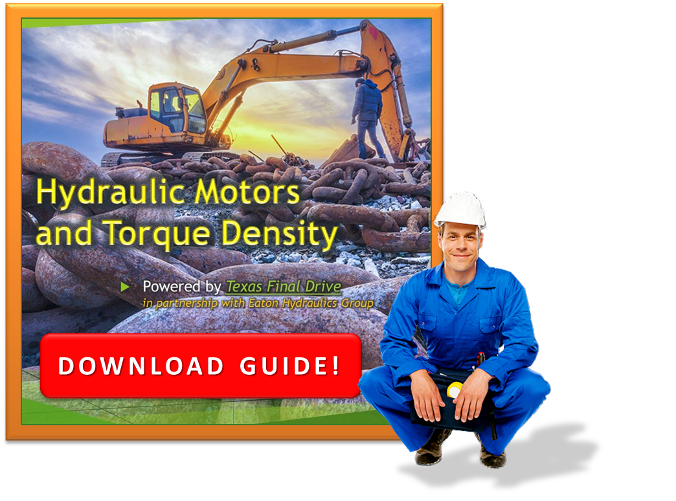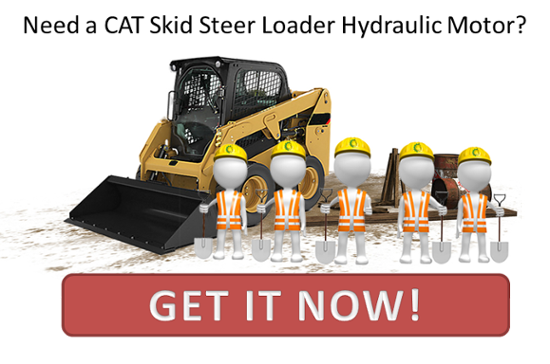Dictionary Terms Related to Hydraulic Motors
Did you know that there are 7 different types of torque related to hydraulic motors? Are you sure you know what maximum and minimum motor speed mean? If you're interested in a review of these terms, we’ve put together this dictionary of terms related to hydraulic motors that are important for you to know.
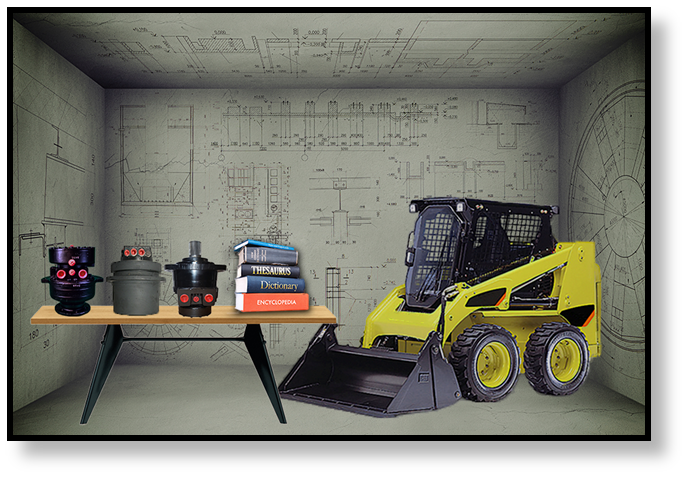
Here are a few more blog posts from the Shop Talk blog:
- Final Drives: Re-manufactured Versus Rebuilt
- Hydraulic Motors: Radial Piston Versus Axial Piston
- An Introduction to Torque Density
Torque
Torque, Theoretical Torque, Motor Torque Rating, Running Torque, Starting Torque, Breakaway Torque, Stalling Torque, Torque Ripple
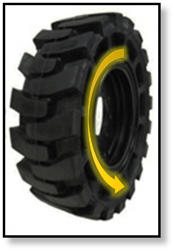 Torque is a very important term in hydraulic motors and refers to the turning capacity of the motor. It is directly related to the available system pressure and the motor displacement.
Torque is a very important term in hydraulic motors and refers to the turning capacity of the motor. It is directly related to the available system pressure and the motor displacement.
Theoretical torque refers to the torque available at the shaft, but keep in mind that it assumes perfect efficiency with no mechanical losses – which is not realistic. A better measure of the capabilities of a hydraulic motor would be a motor torque rating: this is available torque for a specific pressure drop across the motor.
You may have heard of running torque, but you may not know there are two different definitions for it. If the running torque is referring to a load, then it is the torque needed to keep that load turning. When running torque refers to the motor itself, it is the actual torque that the motor can generate in order to keep a load turning.
Running torque takes into account the inherent inefficiencies of a hydraulic motor, and is going to be a percentage of the motor’s theoretical torque. Note running torque is directly related to the pressure drop across the motor – if the pressure drop varies, so does the running torque.
Another type of torque is starting torque. The term starting torque refers to how much torque the hydraulic motor can generate from a dead stop. This is similar to breakaway torque, which is how much torque is needed to get a stationary load moving. Stalling torque refers to the force needed to stop the motor.
Finally, there is torque ripple: the difference between the minimum torque and maximum torque that can be delivered at a given pressure during a single revolution of the motor.

Note that starting torque is almost always going to be less than the running torque in a hydraulic motor. This makes sense when you consider that it is easier to keep a running load moving than it is to start running a load from a dead stop.
Efficiency
Mechanical Efficiency
The mechanical efficiency of a hydraulic motor is simply torque delivered/theoretical torque. It will, of course, be less than 100%. This is going to be different from the overall efficiency, which is the ratio of output power to input power.
Motor Displacement
Motor Displacement, Fixed-displacement Hydraulic Motors, Variable-displacement Hydraulic Motors
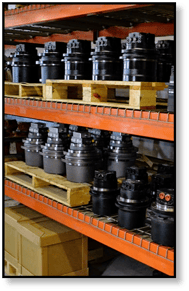
One of the defining characteristics of a hydraulic motor is its motor displacement.
Motor displacement is the volume of fluid needed for the output shaft to make one revolution. Fixed-displacement hydraulic motors provide constant torque with variable speed achieved by varying the flow of hydraulic fluid to the motor.
Variable-displacement hydraulic motors can vary both torque and speed. They do this by keeping the input flow constant and the pressure constant but varying the displacement. When the displacement is varied, the torque speed ratio is adjusted.
Operating Pressure
Operating Pressure
The operating pressure of a hydraulic motor is the pump pressure minus the line losses. It is the pressure at which the motor normally operates and is sometimes referred to as system pressure.
Motor Speed
Motor Speed, Maximum Motor Speed, Minimum Motor Speed
Another concern with hydraulic motors is the motor speed. Motor speed is related to the volume of hydraulic fluid that is being delivered to the motor and the actual motor displacement. Hydraulic motors have both a minimum and maximum motor speed, but you need to be careful about the definitions – they may not be what you think!
The maximum motor speed is the speed at a given inlet pressure that can be sustained by the motor for a limited time without damaging the motor. The minimum motor speed is the slowest, uninterrupted rotational speed that is available from the motor’s output shaft.
Understanding Hydraulic Motors
One of the greatest hurdles to overcome in any subject is the terminology. This should get you started with the key terminology you need to understand about hydraulic motors.
Here at Texas Final Drive we know our motors! If confronted with a question we are unable to answer we have access to our industry leading partners design engineers and technical experts to get the answers. This enables us to provide best-in-class reman final drive motors and new hydraulic motors.

